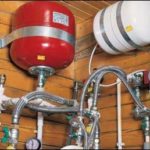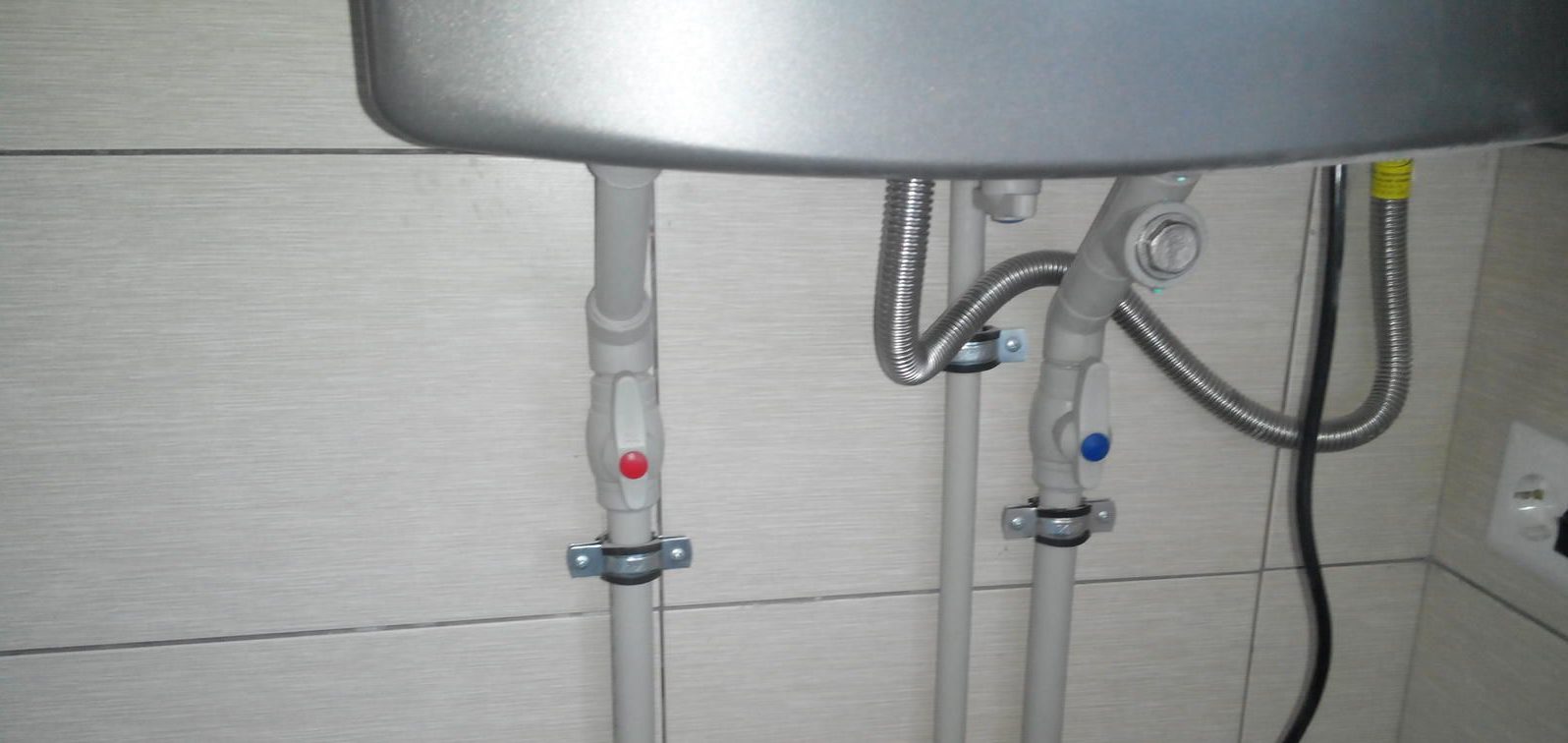DIY gas heater
With the onset of cold weather, many people want to have a small, economical source of heat that they can take with them to the garage, to the country house, or on a hike. Gas is considered the optimal source of energy for such a device. Electricity is not so economical, and is not available everywhere, and when using gasoline, you cannot avoid the unpleasant smell and soot.
Of course, modern industry produces many models of portable gas heaters, but not everyone can afford them. In an effort to save money, many try to make such devices with their own hands.
We will talk about one of the options for an easy-to-manufacture, but at the same time convenient and effective heating device in this article.
The content of the article
Preparing materials and tools for creating a gas heater
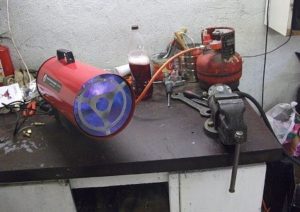 The manufacturing process of the proposed portable gas heater is not at all complicated, and many people will find the materials and tools necessary for the work on the farm.
The manufacturing process of the proposed portable gas heater is not at all complicated, and many people will find the materials and tools necessary for the work on the farm.
For work we will need the following materials:
- Hemispherical metal kitchen sieve;
- Sheet of tin;
- A piece of metal mesh;
- Gas cylinder 0.5 l + burner with valve (sold in any supermarket).
How to make a gas heater? From the tool you need to prepare:
- Marker;
- Metal scissors;
- Riveter;
- Rivets capable of riveting from a thickness of 1 mm;
- A screwdriver with a drill (the diameter of the drill is selected depending on the size of the rivets).
Cutting blanks, assembling parts with your own hands
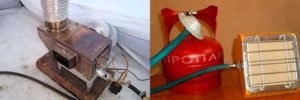 How to make a gas heater with your own hands? When all the tools and materials are prepared, we get to work. The first step is to construct a heat exchanger to dissipate heat from the burner flame.
How to make a gas heater with your own hands? When all the tools and materials are prepared, we get to work. The first step is to construct a heat exchanger to dissipate heat from the burner flame.
We disconnect the handle from the sieve; we won’t need it anymore. We take a sieve, lean it against a sheet of tin and trace it along the outline with a marker. We add rectangular ears approximately 3 cm by 1.5 cm to the resulting circle on four sides.
Using metal scissors, we carefully cut out two identical pieces along the contour, put one of them aside, it will be useful to us in the second stage of work. We continue with the first workpiece, using scissors, cut out a circle in the center with a diameter 5–7 mm smaller than the outer diameter of the burner.
We bend the two ears on the workpiece upward and use rivets to connect it to a metal sieve. We place the resulting structure on the gas burner and fix it using the remaining two ears, bent down.
Great, the first stage is completed, now the flame from the burner will dissipate on the sieve and heat the surrounding volume. You can stop there, but we advise you to slightly modify the design, increasing its efficiency.
The second stage will be the implementation of an additional heat transfer circuit on our heater. It will be a metal glass, the bottom of which will be made from the remaining tin blank, and the walls from a fine mesh.
We take the second blank, drill 10–15 holes in it, cut a strip of mesh 8–10 cm wide. We fasten the two parts with rivets.All that remains is to cover the original design with the resulting product and proceed to testing.
Tips from the professionals
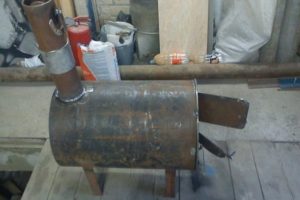 Experts advise not to use homemade gas heaters on an ongoing basis. These designs are good as a cheap alternative to the industrial analogues presented in stores, for periodic trips to nature or to the garage.
Experts advise not to use homemade gas heaters on an ongoing basis. These designs are good as a cheap alternative to the industrial analogues presented in stores, for periodic trips to nature or to the garage.
If you want to heat your cottage, garage or greenhouse with gas on an ongoing basis, you should take a closer look at industrial models of heaters. They are more effective and safe because they have several degrees of protection.
If you nevertheless decide to make a gas heater with your own hands, then for safety reasons be sure to carefully work out and think through the design of the device, provide a simple and intuitive method of activation/deactivation.
Important! All elements of the device responsible for supplying gas must be of industrial manufacture only and not be subject to modifications during operation.
Safety precautions
 Any heat source that uses open combustion is a means of increased danger. And first of all, this applies to gas equipment. For your own safety, to avoid explosion, fire or poisoning by combustion products, strictly follow the safety rules below:
Any heat source that uses open combustion is a means of increased danger. And first of all, this applies to gas equipment. For your own safety, to avoid explosion, fire or poisoning by combustion products, strictly follow the safety rules below:
- When using a gas heater, there must be a supply of fresh air. A decrease in the amount of oxygen and the accumulation of combustion products poses a risk to human life.
- When in use, the heater design heats up to very high temperatures. Do not place the device near flammable materials, and never touch it with your hands until it has cooled completely.
- The gas cylinder must be stored strictly vertically and in a well-ventilated area.
Despite all the difficulties, gas heaters are very popular among the population. Subject to safety requirements and proper operation, even a home-made device will serve you for many years.

